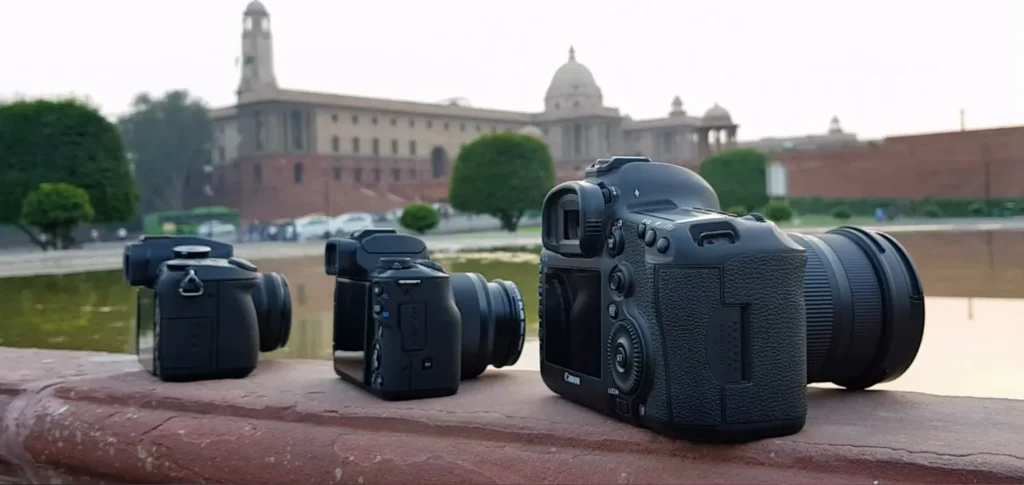
The camera industry has evolved significantly, offering a wide range of choices for photographers and videographers. One of the most common terms encountered when researching cameras is APS-C. In this comprehensive guide, we will explore everything there is to know about APS-C cameras, their advantages, disadvantages, and how they compare to full-frame sensors. Whether you are a beginner or an experienced photographer, this guide will help you make an informed decision about which sensor type best suits your needs.
What Is an APS-C Sensor?
APS-C stands for Advanced Photo System type-C, a sensor format derived from the APS film system introduced in the 1990s. APS-C sensors are smaller than full-frame sensors but larger than micro four-thirds sensors, making them a popular choice for both DSLR and mirrorless cameras.
Key Features of APS-C Sensors:
- Smaller Sensor Size: Typically measuring around 23.5mm x 15.6mm (depending on the manufacturer), APS-C sensors are more compact than full-frame sensors.
- Crop Factor: APS-C sensors introduce a crop factor of around 1.5x (Nikon, Sony, Fujifilm, Pentax) and 1.6x (Canon), affecting the effective focal length of lenses.
- Affordability: Cameras with APS-C sensors are generally more budget-friendly compared to full-frame cameras.
- Compact and Lightweight: Due to their smaller sensor size, APS-C cameras are often more portable and easier to handle.
The History and Evolution of APS-C Sensors
APS-C sensors have been around for several decades, originally stemming from the APS film format introduced in the mid-1990s. Although APS film was eventually discontinued, the APS-C sensor format continued to be widely adopted in the digital camera market.
Key Milestones:
- Mid-1990s: APS-C sensors emerge as a replacement for APS film format.
- Early 2000s: DSLR manufacturers, including Canon and Nikon, start incorporating APS-C sensors into their camera lineups.
- 2010s-Present: Mirrorless cameras with APS-C sensors become popular, offering high-quality imaging in a more compact body.
APS-C vs. Full-Frame Sensors: Key Differences
A common debate in the photography world is whether APS-C or full-frame cameras are the better choice. Here’s a detailed comparison:
| Feature | APS-C Sensor | Full-Frame Sensor |
| Size | ~23.5mm x 15.6mm | ~36mm x 24mm |
| Crop Factor | 1.5x (Nikon, Sony, Fujifilm), 1.6x (Canon) | 1.0x |
| Low-Light Performance | Good, but more noise at high ISO | Excellent, better ISO performance |
| Depth of Field | Greater perceived depth of field | Shallower depth of field, better subject isolation |
| Size & Weight | Lighter and more compact | Larger and heavier |
| Price | More affordable | More expensive |
Understanding the Crop Factor:
The crop factor affects the effective focal length of a lens. For instance, a 50mm lens on an APS-C camera with a 1.5x crop factor effectively functions as a 75mm lens, making APS-C sensors particularly useful for wildlife and sports photography where additional reach is beneficial.
Advantages of APS-C Cameras
- Affordability: APS-C cameras are more budget-friendly compared to full-frame cameras, making them a great option for beginners and enthusiasts.
- Lightweight & Portable: Due to their smaller size, APS-C cameras are easier to carry, making them ideal for travel and street photography.
- Greater Telephoto Reach: The crop factor effectively extends the focal length of lenses, which is particularly useful for wildlife and sports photography.
- Improved Depth of Field for Landscapes: A wider depth of field can be beneficial for landscape photography, ensuring more elements in the frame are in focus.
- Better Processing Speed: APS-C sensors process less data than full-frame sensors, leading to faster performance in some cases.
Disadvantages of APS-C Cameras
- Lower Low-Light Performance: APS-C sensors struggle with noise at higher ISO levels, making them less effective in low-light conditions.
- Limited Dynamic Range: Full-frame sensors offer better dynamic range, capturing more details in highlights and shadows.
- Shallower Depth of Field Challenges: Full-frame sensors provide better subject isolation, which is desirable for portrait photography.
- Lens Compatibility Issues: APS-C lenses are often incompatible with full-frame cameras, requiring users to upgrade their lenses when switching to full-frame.
When Should You Choose an APS-C Camera?
APS-C cameras are ideal for:
- Beginners and Enthusiasts: A great starting point for those new to photography.
- Travel Photographers: Lighter and more compact cameras make travel photography easier.
- Wildlife and Sports Photographers: The crop factor enhances the telephoto reach of lenses.
- Budget-Conscious Buyers: APS-C cameras provide great quality at a lower cost.
When to Upgrade to a Full-Frame Camera
While APS-C cameras offer numerous benefits, full-frame cameras excel in professional applications. Consider upgrading to a full-frame sensor if:
- You need superior low-light performance.
- You require better dynamic range and detail.
- You work extensively in portrait, commercial, or professional photography.
How Professionals Use APS-C Cameras
Despite the advantages of full-frame sensors, many professional photographers still use APS-C cameras for specific tasks:
- Photojournalism & Street Photography: Compact and lightweight APS-C cameras are discreet and portable.
- Wildlife Photography: The crop factor provides greater telephoto reach.
- Sports Photography: Faster burst rates and smaller file sizes facilitate rapid shooting.
Final Thoughts: Is APS-C the Right Choice for You?
Choosing between APS-C and full-frame sensors depends on your photography needs, budget, and preferences. If you are looking for affordability, portability, and versatility, APS-C cameras are an excellent choice. However, if ultimate image quality and low-light performance are your priorities, then a full-frame camera may be worth the investment.
By understanding the strengths and limitations of APS-C sensors, photographers can make an informed decision and select the best camera for their creative pursuits.